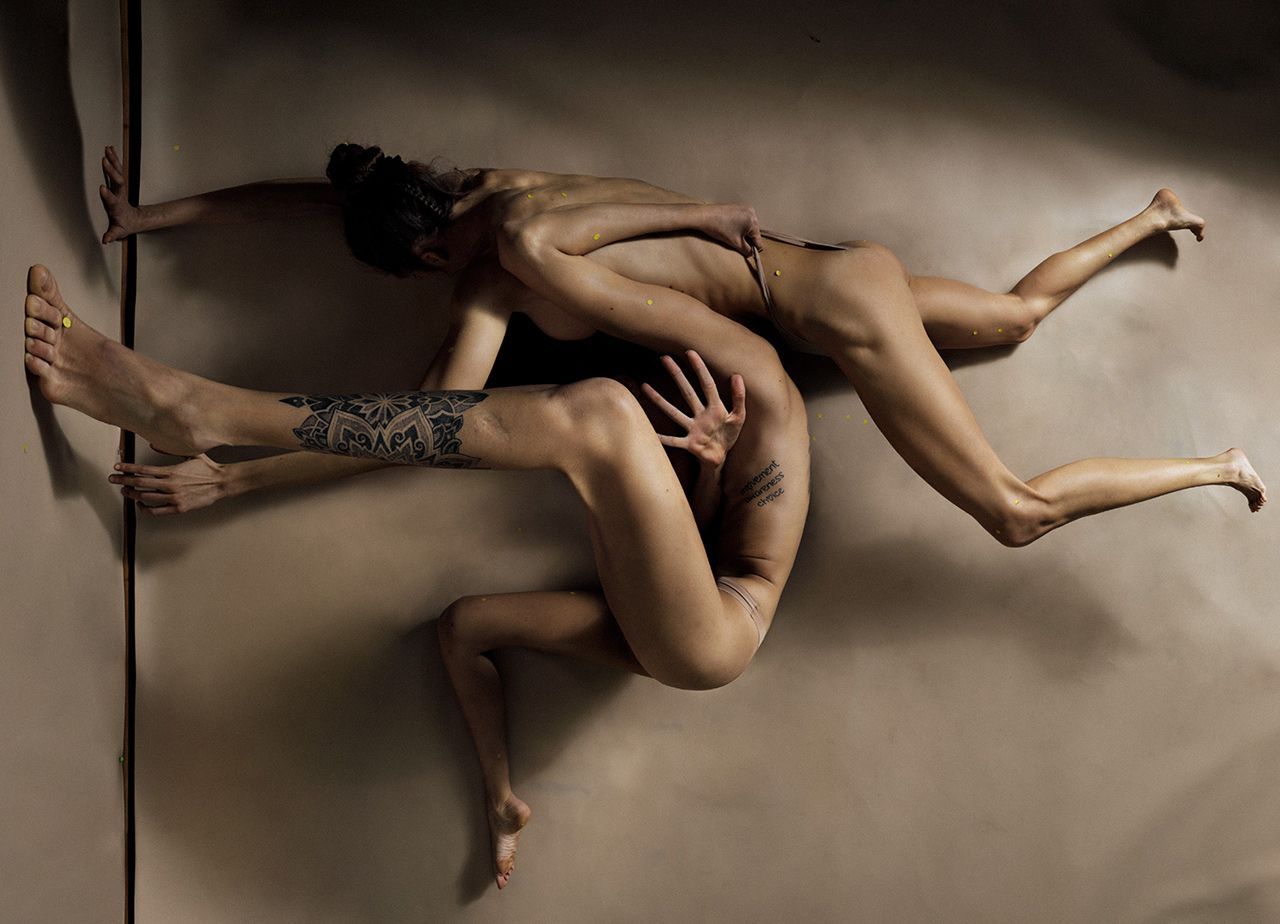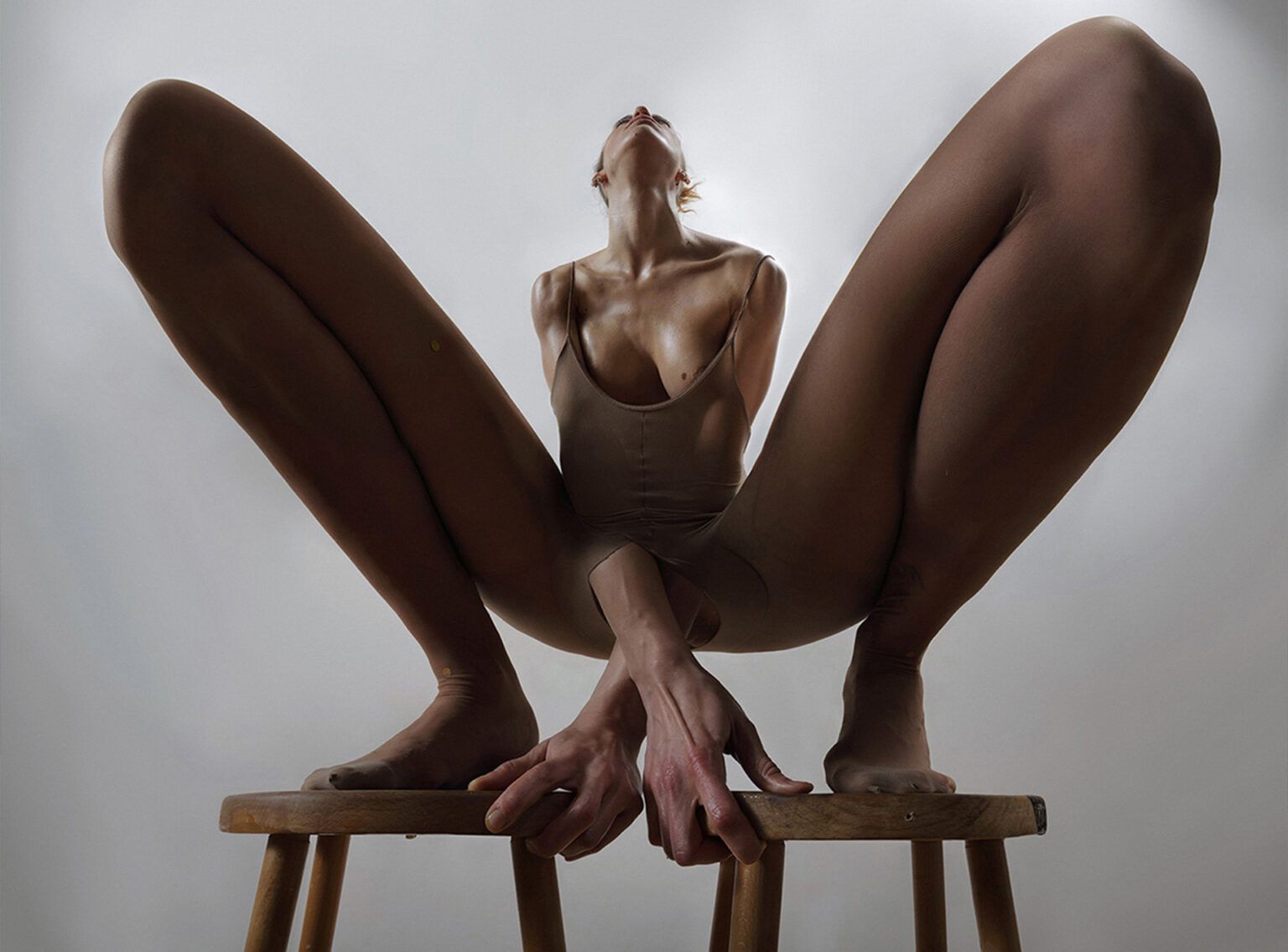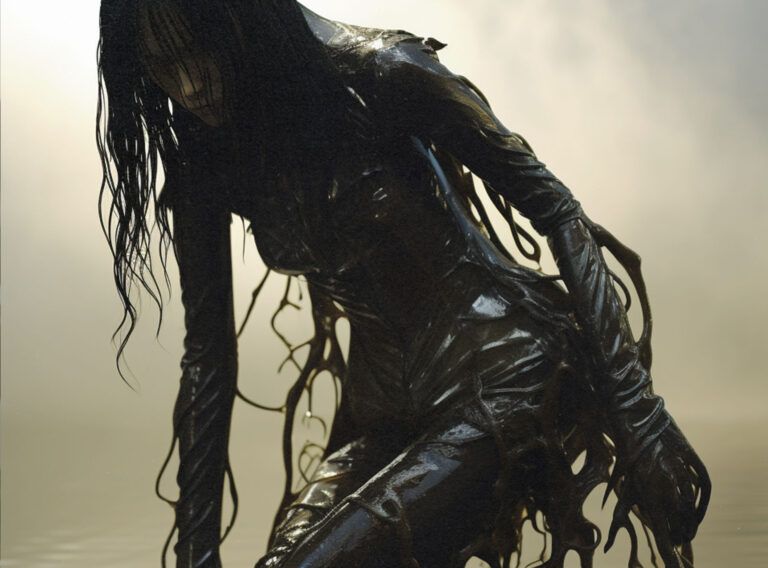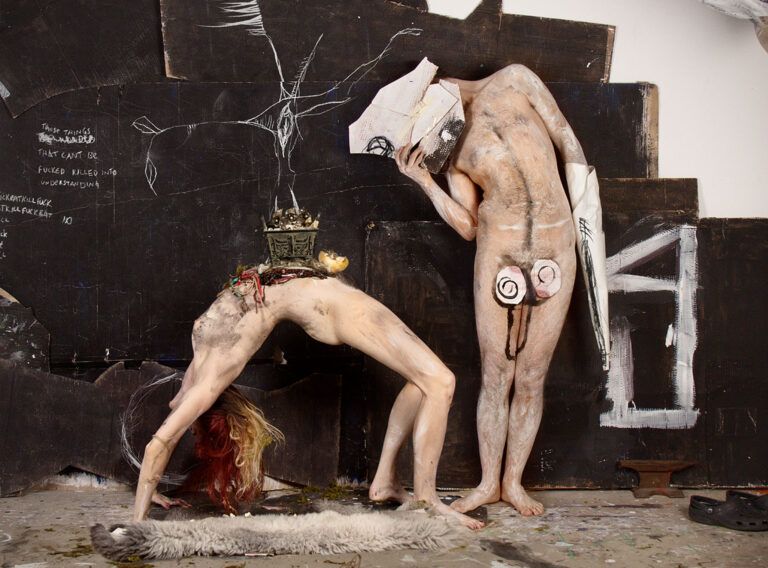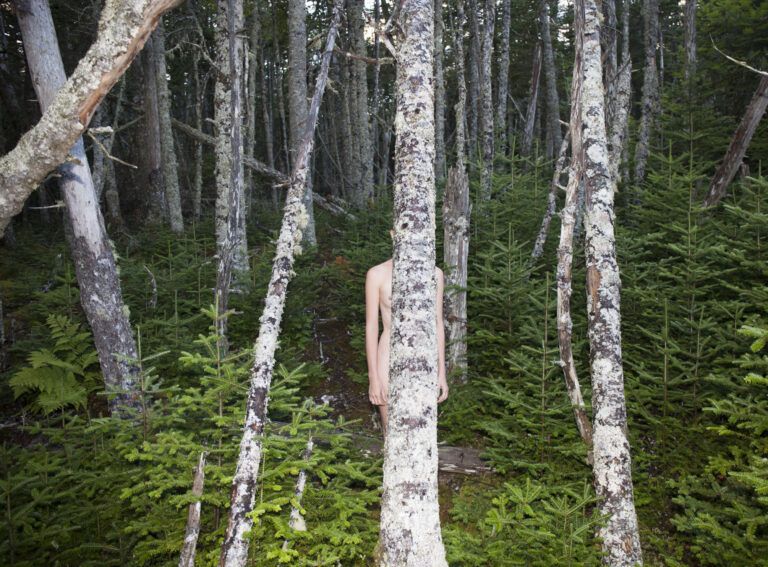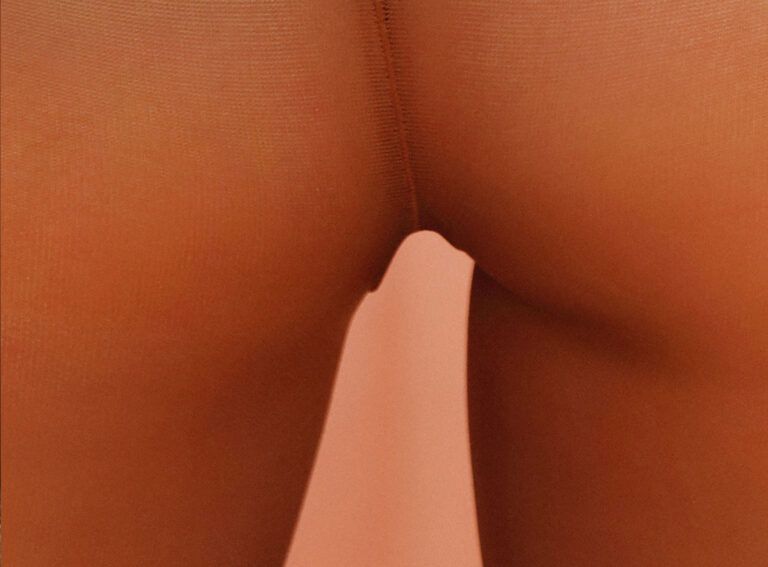THE CONCEPT AS DESCRIBED BY THE AUTHOR / Human Dilatations is a glimpse of the lack of the contemporary human being, barred from the two elements that distinguish their quest: physical perfection and the actual power/role of the mind. Each image represents a body with partially distorted proportions that overshadow the head, which dissolves without a trace. My path began with the image of women of our times – it has been reduced to a pattern, a combination of codes and models that leads to the woman/individual instead of the other way around.
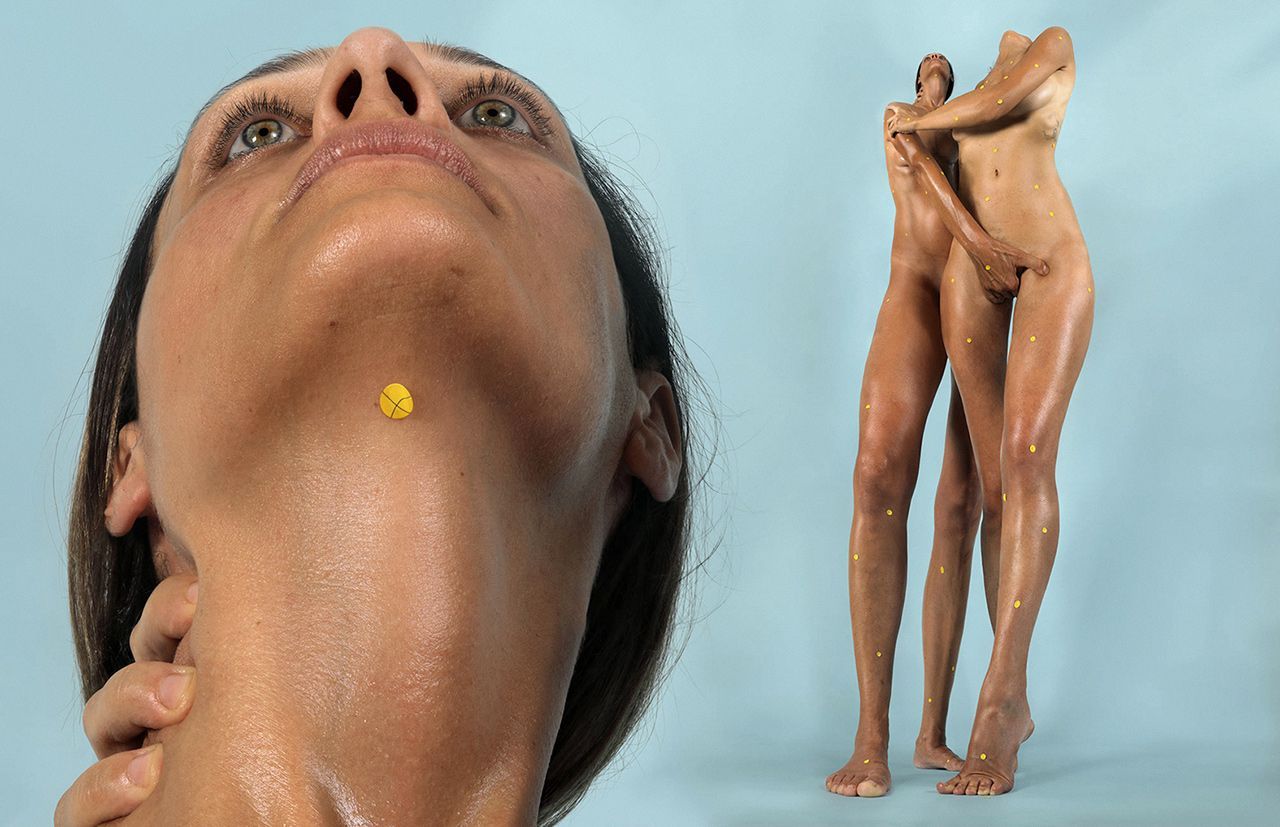
Human Dilatations do not fear the signs of frailness of the body and its imperfections but rather encourage the female image to appear as a whole: a shape by itself in a game of distortions that allows one to relate to the image differently, entirely detached from the stereotypical and hypocritical notion of beauty.
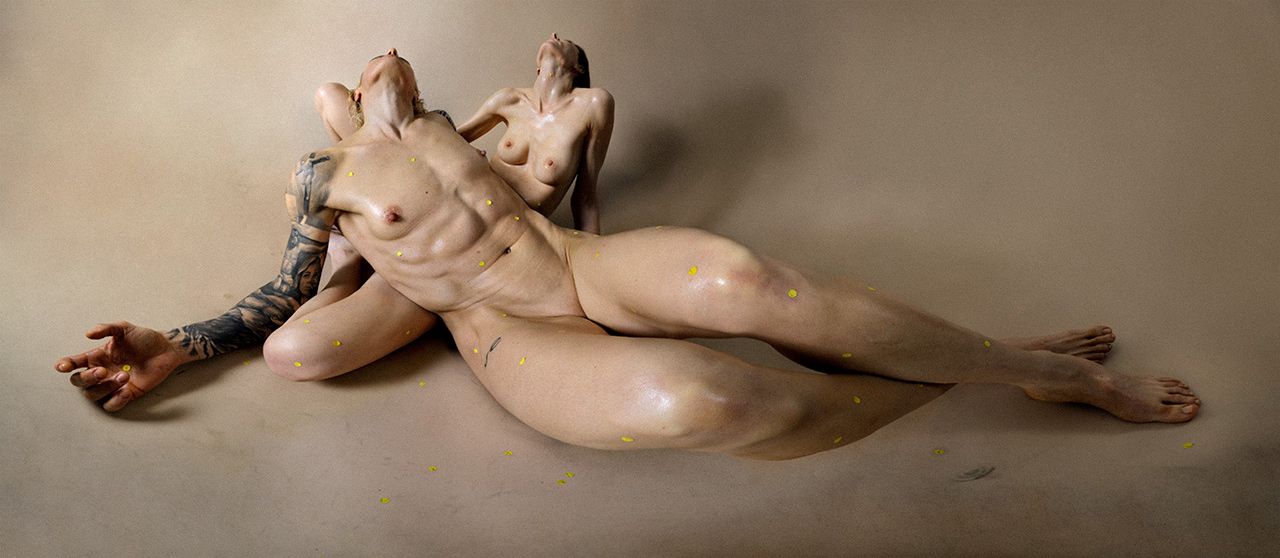
My challenge is to seek the essence of the female being in a dimension that goes beyond logos. In order to do so, I started with the Neolithic Period as a reference point. The symbolism of the Goddess and the mystery around life, death and regeneration. A cycle represented by a large complex of symbols, which survived over millennia and were present even before patriarchal religions. When analyzing the small statues (made of bone, stone or terracotta) dating back to the Stone Age, I immediately perceive their pure essence and fragility.
The Human Dilatations project is a series, which is still in progress and consists of: Human Dilatations, Suspension, Monolith and The Hug.
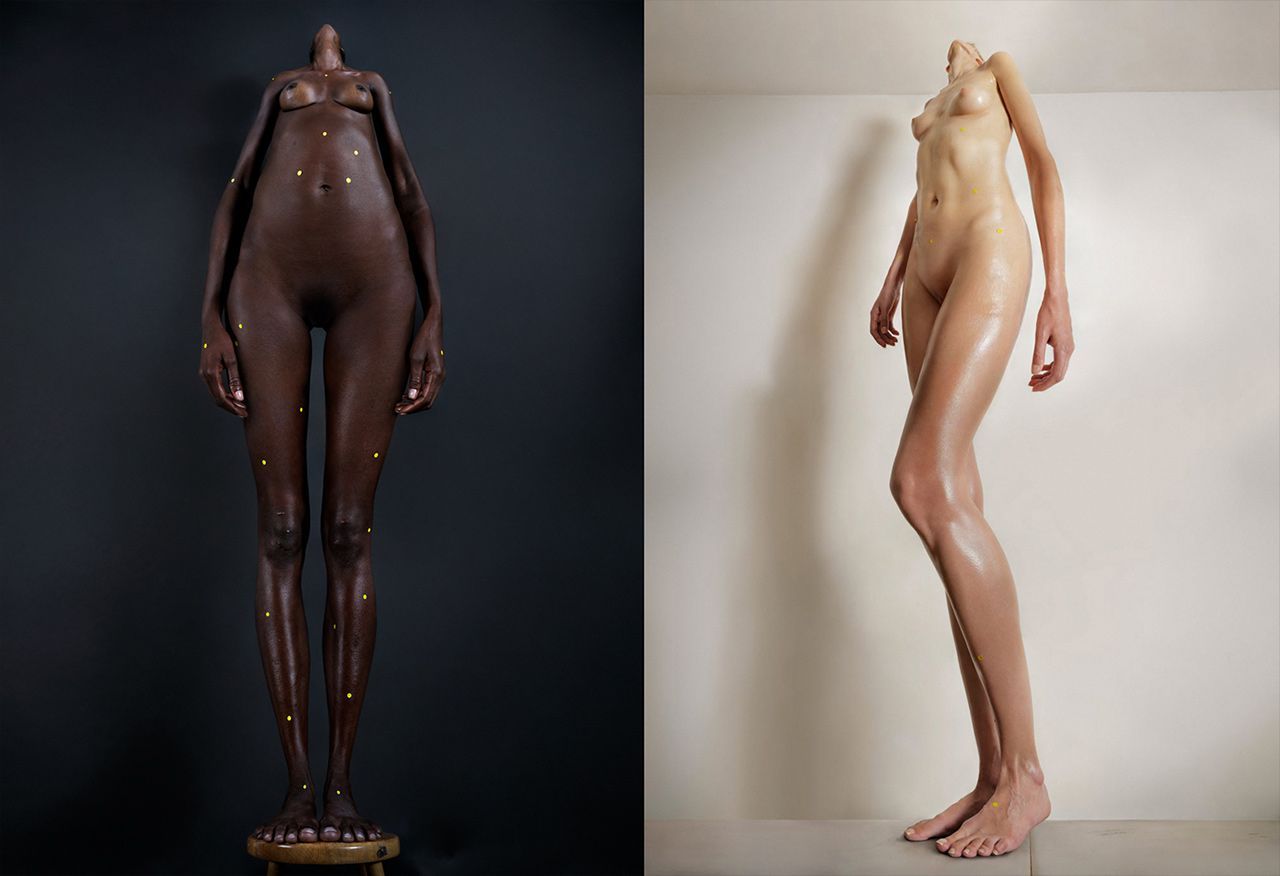
INTERVIEW FOR SWARM MAG
What role does physicality/corporealness play in your work?
The body represents the material evidence of the flow of time, attenuated by a robust resistance that today’s man activates in relation to the subconscious belief of his own immortality. This is encouraged by the environment in which he evolves, which pushes towards an approach to life made up of increasingly abstract interconnections and which prompts us to experience reality through progressively more sophisticated filters. Such as forming binding mechanisms without one really realising it. In this process where everything passes through the “net”, the head is an undisputed symbol and the body, unless perfect, an unnecessary “addition” put on display without any specific function other than aesthetic. Human Dilatations inverts these two elements (poles) to show us a body exaggerated in the proportions of some of its physical parts, and a head that fades away to create a split between human vulnerability and the two pillars that distinguish the contemporary man: physical perfection and the power/role of the mind.
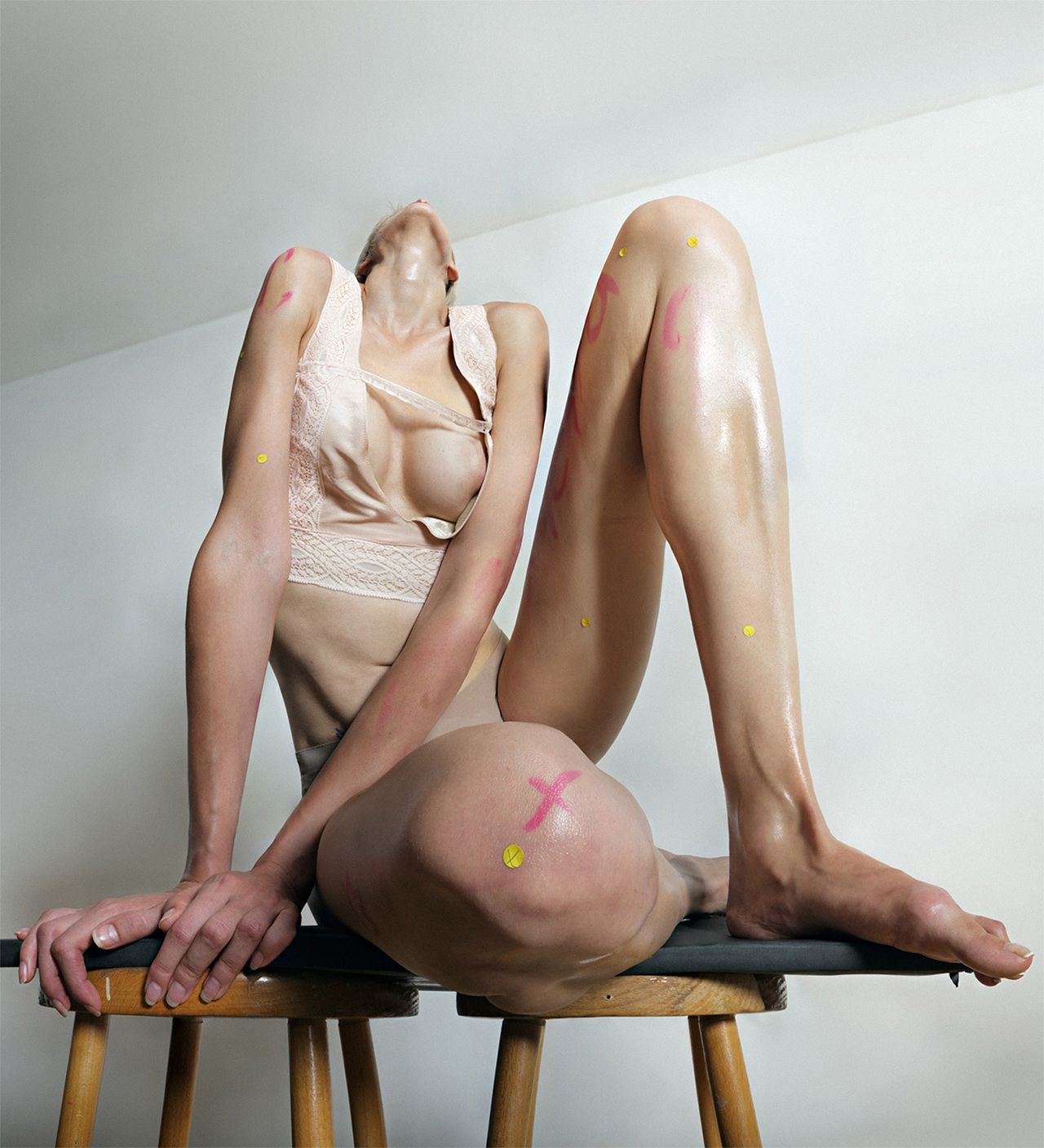
Can you offer any guidance on how to approach your artworks?
The world is like a hornet’s nest, always in a state of turmoil, impenetrable and detached from its surroundings. In this continuous motion, like a sculptor, I saw in the human body the raw material from which to remove the superfluous to extract my contemporary totem. An entity capable of generating thoughts and representing the totality around which one can create rituals. It contains all that people can think and desire, it represents the relationships of men, thus becoming taboo; and the taboo, with its oldest of bans, remains inviolate because it cannot be touched. For the realisation of my totems, I was inspired by the Japanese kintsugi technique and so, during my long posing sessions, I fragmented the portrayed subject into endless single photographic images. After analysing these fragments, I select a few hundred to then reassemble them. At this point, I begin a long process of reconstruction, which allows me to highlight concealed points of the body and give them, as if it were a democracy of parts, a reinterpreted visibility forced into human architecture.
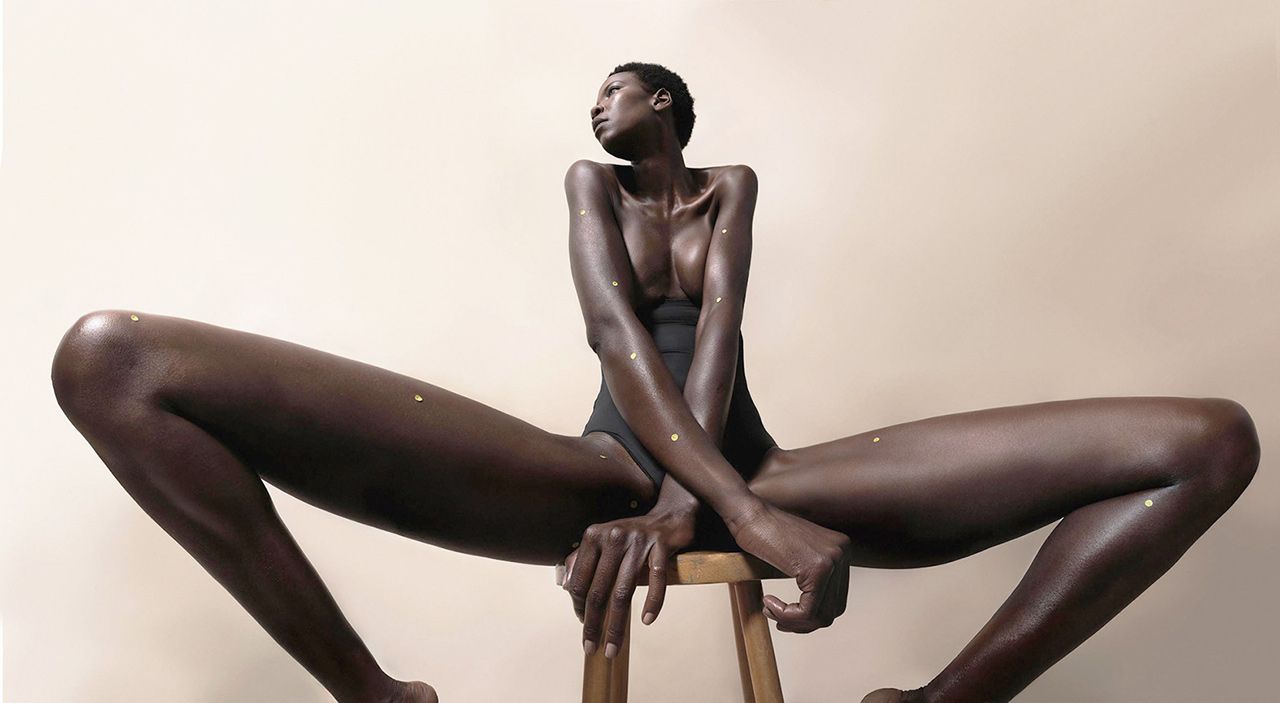
Since the article is featured under the HEAVENLY BODIES theme, how important do you think is the perception of the body for contemporary society and art – or for you personally?
The body is a boundary placed between our interior and private, and our exterior and public. Two originally separate dimensions that perceptively reveal themselves thanks to a common language that allows them to make contact with each other. A subsequent desire to link an immaterial feeling to a physical manifestation that translates into everything that can be perceived through our senses creeps in and takes the form of communication. This increasingly sought-after communication between the two aspects progresses from civilisation to civilisation. It carries both behavioural and aesthetic codes that characterise its temporal and cultural positioning, and towards which one takes a critical attitude in order to overcome old restrictions and allow new ones to be erected in an endless cycle of destruction and reconstruction.
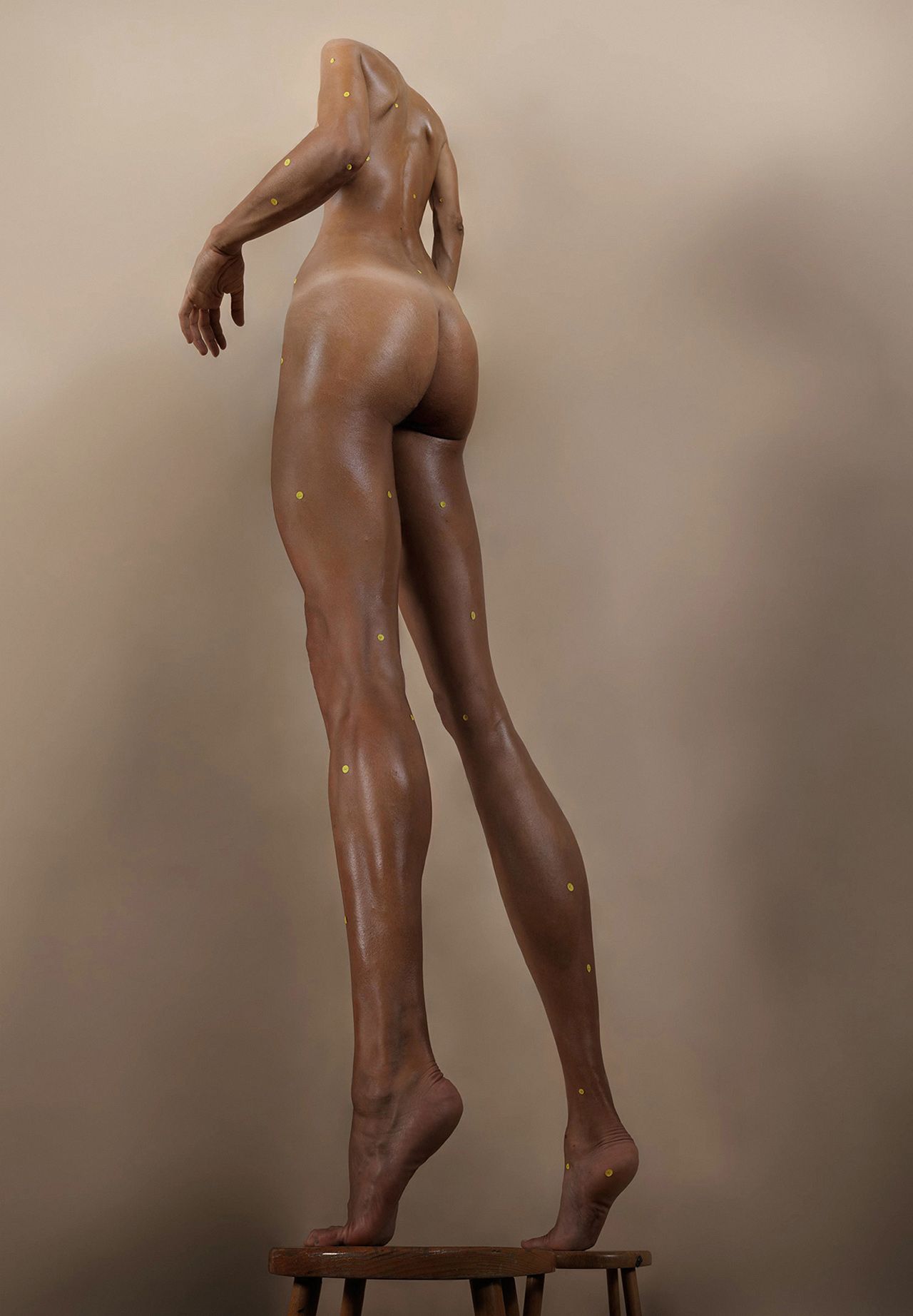
The challenge I set for myself took shape in the idea of doing away with the perception of the female body I have acquired over the years whilst attempting to nullify a specific legacy of deep-rooted cultural conditioning. I wished to relieve myself of those aesthetic canons accepted in our time, which manifest in dehumanisation and commodification of women specific to a cultural heritage that is increasingly difficult to eradicate, without, however, walking into to the trap of responding with an antithesis of beauty (aesthetics of the ugly) – a dualism that would oversimplify my vision of the human being. Rather, I searched for an intermediate path, which would identify a contemporary anthropic identity through revisited features of subjects considered canonically “beautiful” and transported under the guise of neither beautiful nor ugly, deprived of their own identity and of the ability to arouse erotic impulses, in an idea closer to the whole or nobody in particular.
Other shapes. Verticalisations built on the absence of those proportions we are so fond of, in a different way of seeing. From this process, I called for a rupture between what we know through daily experience of acquired stereotypes, and that against which we have instead erected a defence. By breaking the mechanisms that make us give up on reading about the things we think we already know, I hope that we will be able to give each other the opportunity to approach those things again with the freshness required to allow for the return of a sense of marvel. There are always alternative forms of thought. And on one of these paths that run alongside motorways is where I project myself.
Are you working on any other projects that might interest our readers?
For almost two years now, I have been working on an artistic project to which I am very attached but at the moment, I am still keeping it under wraps as I am considering various proposals that will allow me to release it.
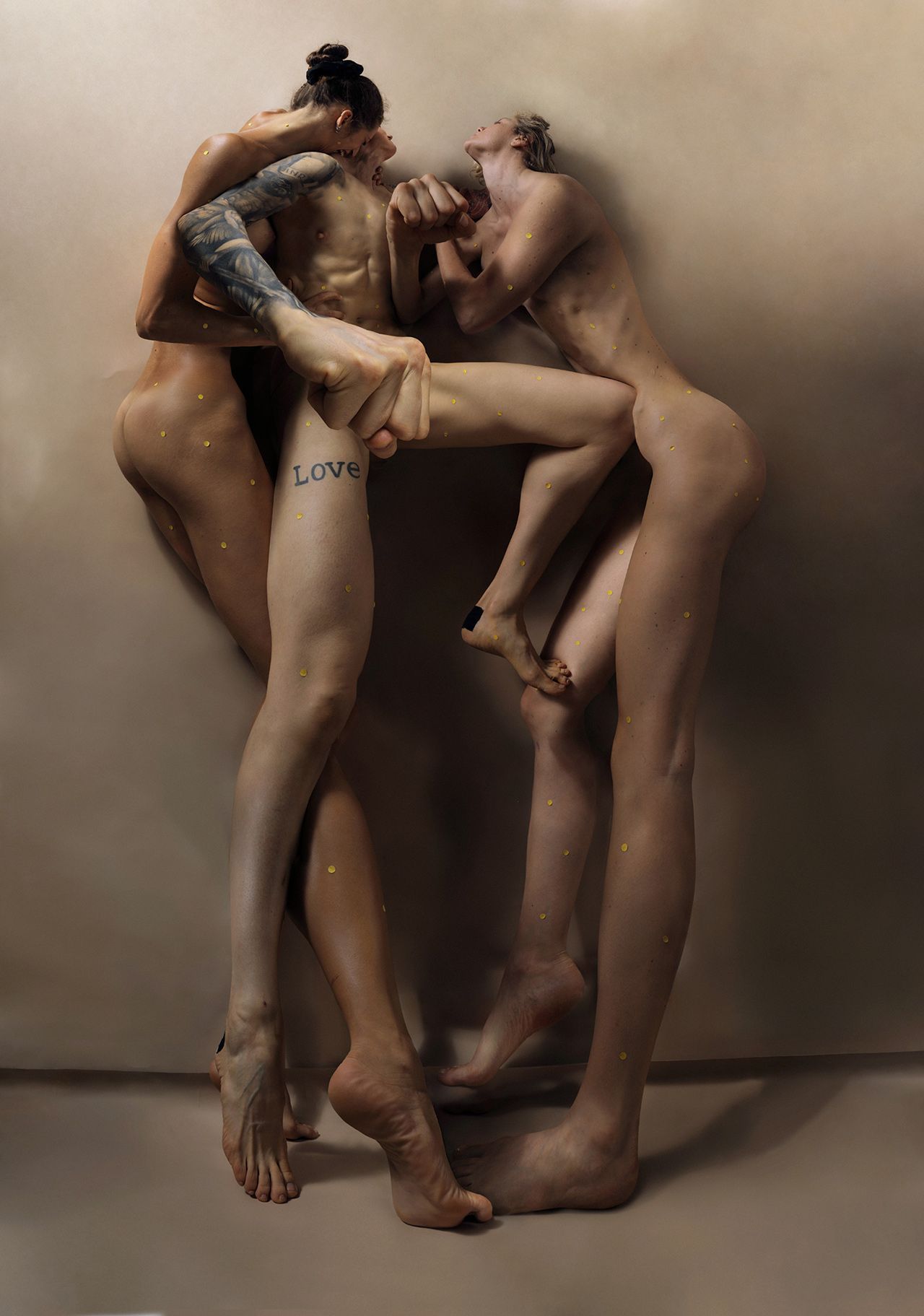
BIO / Swiss Roger Weiss @roger.weiss began experimenting with photography early on and life led him to the Accademia di Belle Arti di Brera, Italy, from which he graduated with the Mention of Excellence. He now works as an artist. The prominent focus of his work is the curiosity about all things corporeal and the humankind in general. In his deconstruction/reconstruction approach, he observes the body with all its alleged flaws, baggage, possibilities, volume, and fragility. His use of the photographic medium is that of an archivist who collects and catalogues repetitive details, which he then rearranges in a way that challenges our detached view of the body and conventional beauty.
